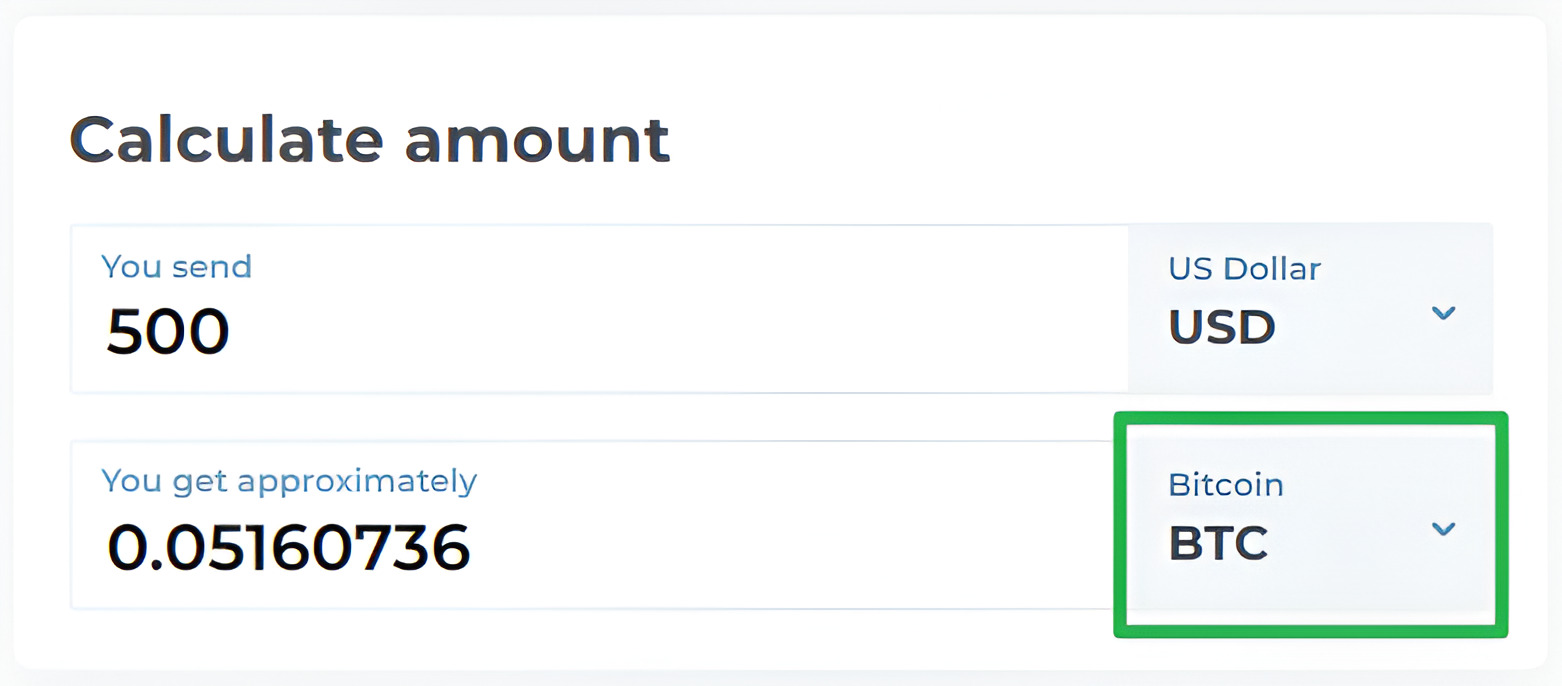What is Bitcoin?
Bitcoin is a digital currency that was created in 2009 by an unknown individual or group of individuals using the name Satoshi Nakamoto. It is a decentralized form of currency, meaning it operates without the need for a central authority like a government or financial institution.
Unlike traditional fiat currencies such as the US dollar or the Euro, Bitcoin is not physical and exists only in digital form. It is based on a technology called blockchain, which is a distributed ledger that records all Bitcoin transactions.
Bitcoin can be stored, transferred, and used as a medium of exchange for goods and services. One of the key features of Bitcoin is its limited supply. There will only ever be 21 million bitcoins in existence, making it a scarce resource.
Transactions made with Bitcoin are verified by network nodes through cryptography. This ensures the security and integrity of the transactions.
One of the main advantages of Bitcoin is its potential for anonymity. While all Bitcoin transactions are recorded on the blockchain, the identities of the parties involved are not disclosed. This makes Bitcoin attractive to individuals who value privacy and want to avoid censorship or government control over their financial activities.
Bitcoin has gained popularity as an alternative form of payment and a store of value. It has a global reach, allowing for easy and fast cross-border transactions without the need for intermediaries.
Overall, Bitcoin represents a new era in digital currency and has the potential to revolutionize the way we think about money and financial transactions. Its decentralized nature and limited supply make it a unique and intriguing asset.
How Does Bitcoin Work?
Bitcoin operates on a technology called blockchain, which is a decentralized ledger that records all Bitcoin transactions. The blockchain essentially serves as a public, transparent, and tamper-proof record of every transaction ever made with Bitcoin.
When a user initiates a Bitcoin transaction, it is broadcasted to the network, where it is verified by a group of computers known as miners. These miners compete to solve complex mathematical problems in order to add the transaction to the blockchain. Once a transaction is verified and added to the blockchain, it is considered confirmed and cannot be reversed.
One key aspect of Bitcoin is its reliance on cryptography to secure transactions and control the creation of new bitcoins. Each user has a pair of cryptographic keys: a public key and a private key. The public key is used to receive bitcoins, while the private key is used to sign transactions and prove ownership of the bitcoins.
Bitcoin mining plays a crucial role in the operation of the network. Miners use specialized hardware and software to solve mathematical puzzles, which in turn validates transactions and adds them to the blockchain. Miners are rewarded with newly created bitcoins for their computational efforts.
A noteworthy feature of Bitcoin is its deflationary nature. As mentioned earlier, the supply of bitcoins is limited to 21 million. This scarcity is achieved through a process called halving, which occurs approximately every four years. Halving reduces the number of bitcoins rewarded to miners, thereby slowing down the rate at which new bitcoins are introduced into the system.
To use Bitcoin, users need a digital wallet to store their bitcoins. These wallets can be software-based or hardware devices. Wallets provide a secure interface for users to send and receive bitcoins and keep track of their transaction history.
Bitcoin transactions offer various advantages, including quicker and cheaper cross-border transfers compared to traditional methods. Additionally, Bitcoin transactions can be made without the need to disclose personal information, providing a level of privacy and security.
Overall, Bitcoin’s decentralized and transparent nature, along with its cryptographic security, make it a unique and innovative form of digital currency.
The Value of Bitcoin
The value of Bitcoin is driven by a combination of factors, including supply and demand dynamics, market sentiment, and investor speculation.
One of the key factors impacting the value of Bitcoin is its limited supply. With only 21 million bitcoins in existence, scarcity plays a significant role in driving up the value. As more people become interested in Bitcoin, the demand for it increases, which can lead to price appreciation.
Market sentiment also plays a significant role in determining the value of Bitcoin. Positive news and developments regarding Bitcoin’s adoption or regulatory clarity can boost investor confidence and drive up the price. Conversely, negative news or increased regulatory scrutiny can lead to a decline in value.
Investor speculation is another factor that can heavily influence Bitcoin’s value. As with any investment, the perception of future price movements can drive buying and selling decisions. Some investors may buy Bitcoin with the expectation that its value will continue to rise, while others might sell to lock in profits or mitigate potential losses.
The use of Bitcoin as a medium of exchange also impacts its value. As more businesses and individuals accept Bitcoin as a form of payment, it increases the utility and demand for the cryptocurrency, potentially driving up its value. Additionally, geopolitical factors or economic instability in certain regions may lead people to seek out Bitcoin as a safe-haven asset, which can drive up demand and, subsequently, its value.
It is important to note that the value of Bitcoin can be subject to significant volatility. Price fluctuations can occur rapidly, resulting in significant gains or losses for investors. This volatility is attributed to the relatively small size of the Bitcoin market compared to traditional financial markets, as well as its nascent and evolving nature.
Overall, the value of Bitcoin is determined by a complex interplay of supply and demand factors, market sentiment, and investor speculation. As the cryptocurrency continues to gain mainstream acceptance and the ecosystem around it evolves, its value may continue to fluctuate in response to various market dynamics.
Factors That Affect the Price of Bitcoin
The price of Bitcoin is influenced by a multitude of factors, both internal and external to the cryptocurrency market. Understanding these factors can help investors and enthusiasts gain insights into the potential drivers of price movements. Here are some key factors that affect the price of Bitcoin:
- Market Demand: The level of demand for Bitcoin plays a crucial role in driving its price. When more people are interested in buying Bitcoin, its price tends to increase. Factors such as growing adoption, increased acceptance by merchants, and heightened media attention can contribute to increased demand.
- Market Sentiment: The overall sentiment in the market, influenced by news, events, and investor perceptions, can significantly impact the price of Bitcoin. Positive news, such as regulatory clarity or institutional adoption, can drive up prices, while negative news, such as security breaches or regulatory crackdowns, can lead to price declines.
- Regulatory Environment: Government regulations and policies regarding cryptocurrencies have a direct impact on Bitcoin’s price. Favorable regulations, providing clarity and a supportive environment, can boost investor confidence and drive up prices. Conversely, stringent regulations or bans can dampen sentiment and result in price decreases.
- Technological Developments: Innovations within the Bitcoin ecosystem, such as upgrades to the underlying technology, scaling solutions, or improvements in security and privacy, can influence the price of Bitcoin. Positive technological advancements can create optimism and attract investment, driving the price upwards.
- Competition: The presence of other cryptocurrencies can also affect the price of Bitcoin. As the cryptocurrency market is highly competitive, investors may shift their focus and capital from one cryptocurrency to another based on factors such as technological advantages, adoption rates, or perceived value. Changes in the competitive landscape can impact the demand and price of Bitcoin.
- Macroeconomic Factors: Broader macroeconomic conditions, such as inflation, interest rates, geopolitical events, or economic instability, can indirectly impact the price of Bitcoin. In times of economic uncertainty, individuals may turn to cryptocurrencies like Bitcoin as a store of value, potentially driving up demand and prices.
It is important to note that the cryptocurrency market is highly volatile, and the price of Bitcoin can experience substantial fluctuations within short periods. Therefore, understanding the various factors that influence Bitcoin’s price can provide valuable insights, but it is essential to approach investment decisions with caution and conduct thorough research.
Historical Price of Bitcoin
The price of Bitcoin has experienced significant volatility and remarkable growth since its inception in 2009. In the early years, Bitcoin had a relatively low value, with virtually no trading activity. However, over time, it gained traction and began attracting attention from investors and enthusiasts.
In 2010, the first recorded transaction involving Bitcoin occurred, with 10,000 bitcoins being used to purchase two pizzas. At that time, the price of Bitcoin was extremely low, with fractions of a cent per coin.
As awareness and adoption of Bitcoin increased, its price began to show more significant fluctuations. In 2011, the price reached its first notable milestone, exceeding $1 for the first time. The following year, the price surged to around $13 before experiencing a sharp decline.
It wasn’t until 2013 that Bitcoin’s price witnessed a dramatic increase. In April of that year, Bitcoin exceeded $100 for the first time, and by November, it reached a peak of over $1,000. This surge in price was fueled by increased media coverage, growing recognition from businesses, and a general increase in Bitcoin adoption.
However, the price of Bitcoin experienced a significant correction in the following months. From 2014 to early 2017, the price fluctuated between a few hundred and a few thousand dollars.
The breakthrough for Bitcoin came in late 2017 when it witnessed an unprecedented rally. In December of that year, the price of Bitcoin soared to nearly $20,000, attracting widespread attention and sparking a global frenzy in cryptocurrency investment.
After reaching its all-time high, Bitcoin experienced a substantial price correction, and its value dropped significantly in the following months. Throughout 2018 and 2019, the price of Bitcoin remained relatively stable, with occasional fluctuations but without reaching the heights seen in late 2017.
In 2020, the price of Bitcoin started to gain momentum again. Despite the impact of the COVID-19 pandemic on global markets, Bitcoin rallied and surpassed $20,000 in December 2020, marking a new all-time high.
It is important to note that the price of Bitcoin is highly volatile and can be influenced by numerous factors. Market sentiment, regulatory developments, macroeconomic conditions, and investor speculation all play a role in determining the price of the cryptocurrency.
As Bitcoin continues to mature and gain wider adoption, its price history showcases the potential for significant growth and price volatility within the cryptocurrency market.
Current Price of Bitcoin
The current price of Bitcoin is constantly changing due to the dynamic nature of the cryptocurrency market. Bitcoin is traded on various digital exchanges around the world, and its price can vary slightly between different platforms.
At the time of writing, the price of Bitcoin is approximately $45,000 per coin. However, it is important to note that Bitcoin prices can experience significant fluctuations within short periods of time.
Bitcoin’s price is influenced by a variety of factors, including market demand, investor sentiment, regulatory developments, and macroeconomic conditions. Positive news such as increased institutional adoption, regulatory clarity, or new technological advancements can drive up the price of Bitcoin. Conversely, negative news or increased regulatory scrutiny can result in price declines.
Bitcoin’s price movements often impact the broader cryptocurrency market as well. As Bitcoin is the oldest and most well-known cryptocurrency, its price serves as a benchmark for other digital assets. When Bitcoin experiences significant price movements, it tends to have a ripple effect on other cryptocurrencies.
It is worth mentioning that the cryptocurrency market is highly volatile, and short-term price fluctuations are common. Bitcoin has a history of witnessing rapid price surges followed by steep corrections. Therefore, it is advisable for investors and traders to exercise caution and conduct thorough research before making any investment decisions.
Several online platforms and financial websites provide real-time updates on the current price of Bitcoin. These platforms allow users to track the price, view historical price charts, and analyze market trends. It is always recommended to utilize reputable sources when checking the current price of Bitcoin.
Overall, the current price of Bitcoin is a reflection of the ongoing demand and supply dynamics within the market. As more investors and institutions embrace cryptocurrencies and the ecosystem continues to evolve, the price of Bitcoin may continue to experience fluctuations and evolve over time.
Is Bitcoin a Good Investment?
The question of whether Bitcoin is a good investment is a topic of much debate and speculation. As with any investment, there are both potential benefits and risks to consider. Here are some key points to ponder when evaluating Bitcoin as an investment:
Potential for High Returns: Bitcoin has gained a reputation for its potential to generate substantial returns. Historically, the price of Bitcoin has experienced significant growth, with periods of exponential increases. Investors who bought Bitcoin during its early stages have seen remarkable profits. However, it is important to note that past performance does not guarantee future results.
Diversification: Adding Bitcoin to an investment portfolio can provide diversification benefits. The cryptocurrency operates independently of traditional financial markets, and its price movements often have minimal correlation with other asset classes. Including Bitcoin in a well-diversified portfolio may help reduce overall risk by offering exposure to different markets.
Global Accessibility: Bitcoin’s decentralized nature and digital format allow for easy accessibility and global reach. The ability to buy, sell, and transfer Bitcoin is not restricted by geographical boundaries or traditional banking hours. This accessibility can be particularly appealing for individuals in countries with limited financial infrastructure.
Emerging Store of Value: Bitcoin is often referred to as digital gold or a store of value. Its limited supply and decentralized nature have led some investors to view it as a hedge against inflation and economic uncertainty. In times of political or economic turmoil, Bitcoin may be seen as a potential safe-haven asset.
Volatility and Risk: Bitcoin is known for its high volatility, which can lead to significant price fluctuations in a short period. These price swings can result in substantial gains or losses for investors. The cryptocurrency market also carries inherent risks, including regulatory uncertainties, security vulnerabilities, and market manipulation.
Lack of Regulation: The regulatory landscape surrounding cryptocurrencies is still evolving. The lack of clear regulations can create uncertainties and risks for investors. Changes in government policies or new regulations may impact the value and viability of Bitcoin as an investment.
Technical Complexity: Understanding the technology and mechanics behind Bitcoin can be challenging for newcomers. The learning curve involved in acquiring, storing, and transacting with Bitcoin can be steep. It is crucial for investors to educate themselves and take necessary precautions to ensure the security of their digital assets.
Ultimately, the decision of whether Bitcoin is a good investment depends on an individual’s risk tolerance, investment goals, and understanding of the cryptocurrency ecosystem. It is important to carefully evaluate the potential rewards and risks associated with investing in Bitcoin and to consider seeking professional financial advice.
How to Acquire Bitcoin
Acquiring Bitcoin involves several steps, and there are various methods available to individuals who wish to purchase this digital currency. Here are some common ways to acquire Bitcoin:
- Bitcoin Exchanges: Bitcoin exchanges are online platforms where users can buy, sell, and trade Bitcoin. These exchanges act as intermediaries, facilitating transactions between buyers and sellers. To acquire Bitcoin, users typically need to sign up for an account, complete a verification process, and link their bank account or credit card. Popular Bitcoin exchanges include Coinbase, Binance, and Kraken.
- Peer-to-Peer Platforms: Peer-to-peer (P2P) platforms connect buyers and sellers directly. These platforms allow individuals to purchase Bitcoin from other users without involving a third-party intermediary. P2P platforms provide a wide range of payment options, including bank transfers and digital payment methods. LocalBitcoins and Paxful are examples of P2P platforms.
- Bitcoin ATMs: Bitcoin ATMs, or BTMs, are physical machines that allow users to buy Bitcoin using cash or debit cards. These ATMs function similarly to traditional ATMs but are specifically designed to facilitate Bitcoin transactions. Users can locate Bitcoin ATMs using online directories or mobile applications. Transactions on Bitcoin ATMs may require user identification and verification.
- Bitcoin Mining: Another way to acquire Bitcoin is through mining, which involves using specialized hardware to solve complex mathematical problems. Successful miners are rewarded with newly created Bitcoin. However, mining Bitcoin requires significant computing power and energy consumption, making it less accessible to the average user.
- Bitcoin Rewards: Some platforms and services offer Bitcoin rewards as a form of incentive. For example, certain online retailers may offer users the option to receive Bitcoin as a cashback reward for their purchases. Additionally, there are platforms that allow users to earn Bitcoin by completing specific tasks or participating in online surveys.
Regardless of the method chosen, it is important to exercise caution and take necessary security precautions when acquiring Bitcoin. Here are some general tips:
- Choose reputable and regulated platforms or services.
- Enable two-factor authentication for added security.
- Use a separate digital wallet to store your Bitcoin and avoid keeping large amounts on exchanges.
- Regularly update your software and keep your devices secure.
- Be vigilant against phishing attempts and scams.
As the cryptocurrency market continues to evolve, new avenues to acquire Bitcoin may emerge. It is important to stay informed and research the options available to ensure a secure and reliable means of acquiring Bitcoin.
How to Store Bitcoin Safely
Ensuring the safe storage of Bitcoin is paramount due to the irreversible nature of transactions and the potential for loss or theft. Here are some important considerations to keep in mind when it comes to storing Bitcoin securely:
- Use a Hardware Wallet: Hardware wallets provide the highest level of security for storing Bitcoin. These physical devices, similar to USB drives, securely store private keys offline, making them less vulnerable to hacking or malware attacks. Examples of popular hardware wallets include Ledger and Trezor.
- Utilize Software Wallets: Software wallets are digital applications that can be installed on mobile devices or computers. They offer convenient access to Bitcoin while allowing users to retain control over their private keys. It is advisable to choose wallets that offer robust security features, such as encryption and multi-factor authentication. Some reputable software wallet options include Exodus, Atomic Wallet, and Electrum.
- Implement Cold Storage: Cold storage refers to keeping Bitcoin offline, away from potential online threats. This can involve using a hardware wallet or creating a paper wallet, which involves generating a Bitcoin address and private key offline and printing them on a physical piece of paper. The paper wallet should be stored in a secure location, such as a safe or lockbox.
- Practice Backup and Redundancy: It is crucial to regularly backup Bitcoin wallets to prevent the risk of permanent loss in the event of hardware failure or accidental deletion. Maintain multiple backups in secure locations and ensure they are encrypted and password protected.
- Stay Updated on Security: Stay informed about the latest security practices and vulnerabilities in the cryptocurrency space. Regularly update wallet software and firmware to protect against known security vulnerabilities. Follow reputable sources and forums within the cryptocurrency community to stay abreast of best practices and emerging threats.
- Exercise Caution Online: Be cautious of online activities related to Bitcoin storage. Avoid clicking on suspicious links or downloading unverified software that could compromise your Bitcoin wallet and private keys. Use strong, unique passwords for wallets and enable two-factor authentication whenever possible.
Remember that the responsibility for securing your Bitcoin lies with you as the owner. While implementing robust security measures can mitigate risks, it is important to remain vigilant and exercise sensible practices when storing and handling Bitcoin.
Consulting with trusted experts in the field and staying informed about the evolving security landscape can further enhance your understanding and ability to store Bitcoin securely.
Conclusion
Bitcoin has transformed the way we think about currency, finance, and investment. Its decentralized nature, limited supply, and potential for high returns have attracted the attention of investors and enthusiasts worldwide. However, it is essential to approach Bitcoin with caution, understanding both its potential benefits and inherent risks.
Bitcoin’s value is driven by factors such as market demand, investor sentiment, technological advancements, and regulatory developments. The historical price of Bitcoin has shown significant volatility, witnessing both rapid growth and steep corrections. It is worth noting that past performance does not guarantee future results, and the cryptocurrency market remains highly volatile.
Before entering the world of Bitcoin, it is crucial to consider factors such as risk tolerance, investment goals, and familiarity with the technology. Researching and understanding the various methods to acquire and store Bitcoin securely is essential to protect your investment. Using reputable exchanges, hardware wallets, and practicing good security habits can minimize the risk of loss or theft.
Bitcoin, while an exciting and innovative asset, should be viewed as part of a well-diversified investment portfolio. It is recommended to consult with financial advisors or experts in the field to gain a comprehensive understanding of the risks and rewards associated with Bitcoin and to make informed investment decisions.
As the cryptocurrency market continues to evolve and regulations become more defined, the future of Bitcoin remains uncertain. It is important to stay informed, adapt to changing market conditions, and approach Bitcoin with a rational and educated mindset.
Whether Bitcoin proves to be a long-term investment option or a passing trend is yet to be seen. As with any investment, it is important to carefully assess your own financial situation and goals before deciding to invest in Bitcoin or any other cryptocurrency.

























